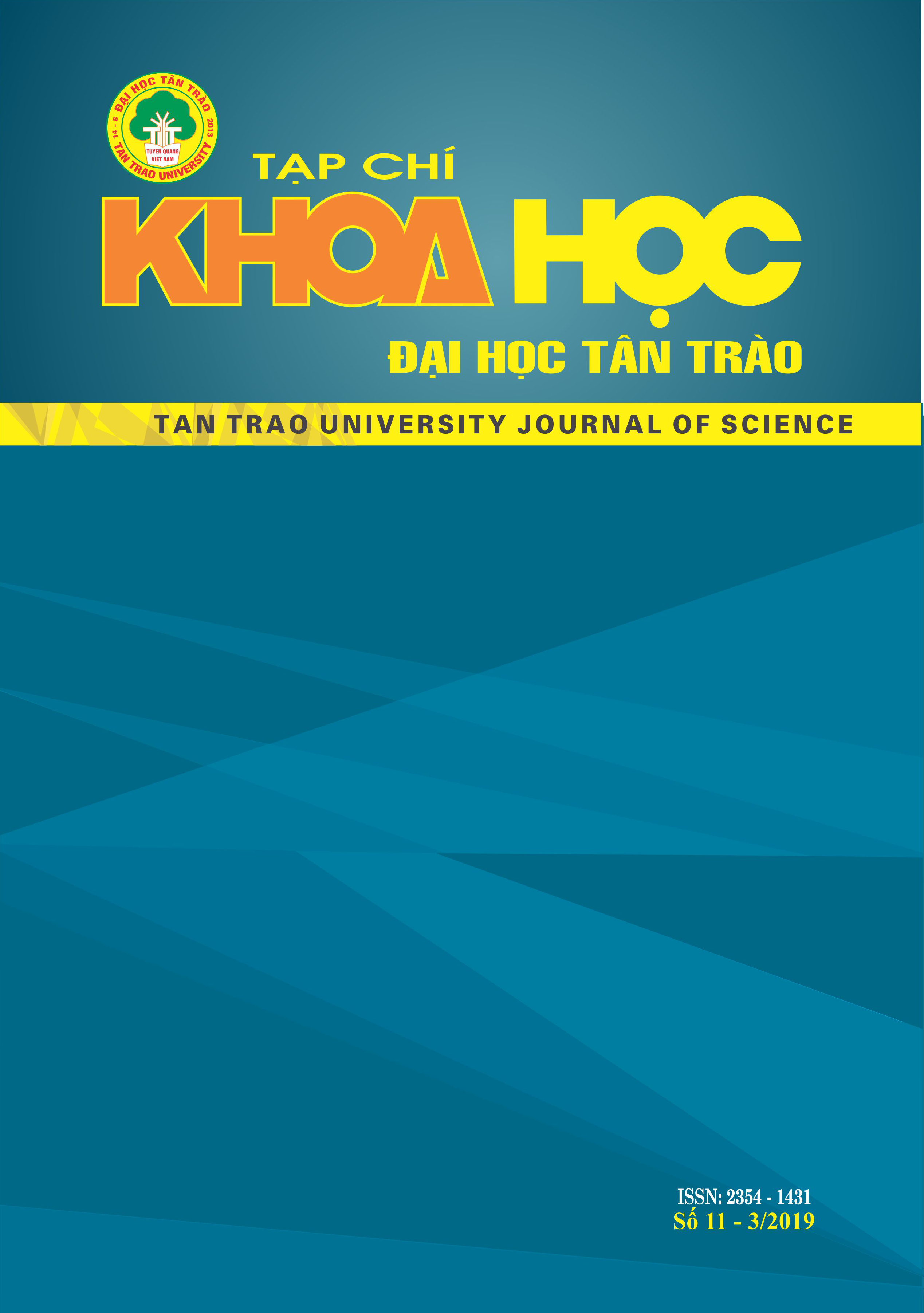Vai trò An toàn khu (ATK) trung ương ở Tuyên Quang trong cuộc kháng chiến chống thực dân Pháp
DOI:
https://doi.org/10.51453/2354-1431/2019/223Từ khóa:
ATK Trung Æ°Æ¡ng; kháng chiến chống Pháp; Căn cứ địa Việt BắcTóm tắt
Cuộc kháng chiến chống Thực dân Pháp thắng lợi đã khẳng định vai trò của ATK trong Căn cứ địa Việt Bắc. An toàn khu Trung ương ở Tuyên Quang đã hoàn thành xuất sắc vai trò của mình, bảo vệ vững chắc các cơ quan đầu não của Đảng và Chính phủ để lãnh đạo cuộc kháng chiến lâu dài, là một trong những bước chuẩn bị cần thiết, có ý nghĩa đặc biệt quan trọng trong việc gìn giữ, xây dựng và phát triển lực lượng cách mạng. Sự ra đời của ATK Trung ương ở Tuyên Quang không phải là ngẫu nhiên, cũng không phải là chủ trương nhất thời, bị động, đối phó với tình thế mà là kết quả của một chủ trương sáng suốt, tầm nhìn chiến lược và quyết tâm kháng chiến của Đảng và nhân dân ta
Tải xuống
Tài liệu tham khảo
1. Báo cáo đặc biệt của Liên khu Đảng bộ X, số 3/BC-LKU ngày 14/5/1949, Bản sao lục số 149/HG-SL ngày 28/5/1949 của Tỉnh ủy Hà Giang;
2. Biên niên sử công tác Đảng, công tác chính trị của lực lượng vũ trang Tuyên Quang trong hai cuộc kháng chiến chống thực dân Pháp và đế quốc Mỹ (1947 – 1975), Bộ chỉ huy quân sự tỉnh Tuyên Quang, 1999.
3. Các danh mục di tích huyện Sơn Dương, Yên Sơn, Chiêm Hóa; Lưu trữ tại Bảo tàng tỉnh Tuyên Quang;
4. Cuộc kháng chiến chống thực dân Pháp xâm lược (1945 – 1954), Nxb Sự thật, Hà Nội, 1986;
5. Chỉ thị về việc chuẩn bị đối phó với cuộc hành quân Thu – Đông của giặc Pháp, Ban chấp hành Trung ương, số 21/CT-TU ngày 1/9/1948;
6. Lời kêu gọi toàn quốc kháng chiến, Hồ Chí Minh tuyển tập, tập 1, Nxb Hà Nội, 1980;
7. Lịch sử Đảng bộ tỉnh Tuyên Quang (1940 – 1975), Nxb Chính trị Quốc gia, Hà Nội 2000;
8. Tổng kết chỉ đạo thực hiện nhiệm vụ chiến lược quân sự của Liên khu Việt Bắc trong kháng chiến chống Pháp (1945 – 1954), Nxb Quân đội nhân dân, Hà Nội 1990;
9. Văn kiện của Đảng bộ Liên khu Việt Bắc, năm 1947, tập I, Ban NCLS Đảng khu tự trị Việt Bắc xuất bản, 1970;
10. Văn kiện của Đảng bộ Liên khu Việt Bắc, năm 1949, tập IV, Ban NCLS Đảng khu tự trị Việt Bắc xuất bản, 1970.
Tải xuống
Đã Xuất bản
Cách trích dẫn
Số
Chuyên mục
Giấy phép

Tác phẩm này được cấp phép theo Giấy phép Quốc tế Creative Commons Attribution-ShareAlike 4.0 .
Bài báo được xuất bản ở Tạp chí Khoa học Đại học Tân Trào được cấp phép theo giấy phép Ghi công - Chia sẻ tương tự 4.0 Quốc tế (CC BY-SA). Theo đó, các tác giả khác có thể sao chép, chuyển đổi hay phân phối lại các bài báo này với mục đích hợp pháp trên mọi phương tiện, với điều kiện họ trích dẫn tác giả, Tạp chí Khoa học Đại học Tân Trào và đường link đến bản quyền; nêu rõ các thay đổi đã thực hiện và các nghiên cứu đăng lại được tiến hành theo cùng một bản quyền.
Bản quyền bài báo thuộc về các tác giả, không hạn chế số lượng. Tạp chí Khoa học Tân Trào được cấp giấy phép không độc quyền để xuất bản bài báo với tư cách nhà xuất bản nguồn, kèm theo quyền thương mại để in các bài báo cung cấp cho các thư viện và cá nhân.
Mặc dù các điều khoản của giấy phép CC BY-SA không dành cho các tác giả (với tư cách là người giữ bản quyền của bài báo, họ không bị hạn chế về quyền hạn), khi gửi bài tới Tạp chí Khoa học Đại học Tân Trào, tác giả cần đáp ứng quyền của độc giả, và cần cấp quyền cho bên thứ 3 sử dụng bài báo của họ trong phạm vi của giấy phép.






